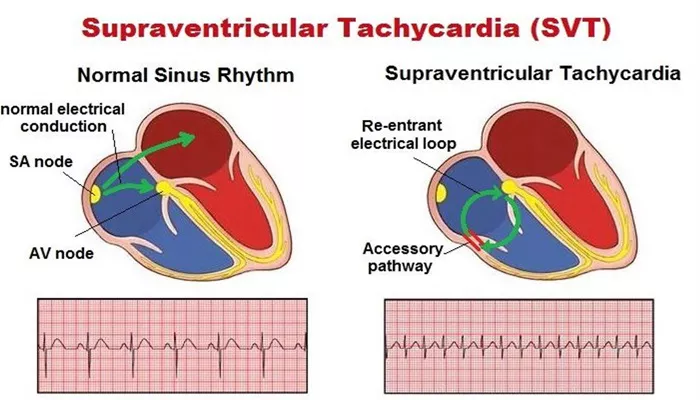Pericardial effusion is a medical condition characterized by the accumulation of fluid in the pericardial sac, which surrounds the heart. This condition can lead to significant complications if not managed properly. Understanding the causes of pericardial effusion is essential for diagnosis and treatment. Among the various causes, viral infections are recognized as the most common trigger for this condition. This article delves into the details of pericardial effusion, focusing on viral infections as the primary cause, their mechanisms, symptoms, diagnosis, and treatment options.
What Is Pericardial Effusion?
The pericardium is a double-layered membrane that surrounds the heart. It serves several important functions, including:
Protection: The pericardium protects the heart from infection and trauma.
Lubrication: It contains a small amount of fluid that reduces friction between the heart and surrounding structures as the heart beats.
Prevention of Overexpansion: The pericardium limits the heart’s expansion, preventing overfilling with blood.
Pericardial effusion occurs when excess fluid builds up in this space. This buildup can result from various conditions, including infections, inflammation, injury, or malignancy.
Understanding Viral Infections
Viral infections are the most prevalent cause of pericardial effusion. They can trigger an inflammatory response in the pericardium, leading to fluid accumulation. Several viruses are known to be responsible for this condition, including:
Coxsackievirus: A member of the enterovirus family, Coxsackievirus is a common cause of viral myocarditis and pericarditis. It primarily affects children and young adults and can lead to inflammation of the heart muscle and the pericardium.
Influenza Virus: This virus is responsible for seasonal flu and can lead to respiratory infections. In some cases, it can also cause pericardial effusion by triggering an inflammatory response.
Human Immunodeficiency Virus (HIV): HIV can lead to pericardial effusion due to both direct infection of the pericardium and associated opportunistic infections.
Epstein-Barr Virus (EBV): This virus is best known for causing infectious mononucleosis. EBV can also result in pericardial effusion, especially in immunocompromised individuals.
Cytomegalovirus (CMV): Another member of the herpes virus family, CMV is often associated with severe disease in immunocompromised patients, leading to pericardial effusion.
How Do Viral Infections Cause Pericardial Effusion?
Viral infections lead to pericardial effusion primarily through the following mechanisms:
SEE ALSO: Does Myocarditis Cause Permanent Damage?
Inflammatory Response
When a virus infects the body, the immune system responds by activating various immune cells. These cells release cytokines and other inflammatory mediators that can cause inflammation of the pericardium, resulting in increased vascular permeability. As a result, fluid leaks into the pericardial space, leading to effusion.
Direct Infection of Pericardial Tissue
In some cases, the virus can directly invade the pericardial tissue, leading to inflammation and fluid accumulation. This direct infection is particularly relevant for viruses like Coxsackievirus and HIV.
Secondary Complications
Viral infections can lead to complications, such as myocarditis (inflammation of the heart muscle) and systemic inflammatory responses. These complications can further exacerbate pericardial effusion.
Symptoms of Pericardial Effusion
The symptoms of pericardial effusion can vary based on the amount of fluid accumulated and the rate of accumulation.
Some individuals may be asymptomatic, while others may experience:
Chest Pain or Discomfort: Patients may describe a sharp or dull ache in the chest. The pain may worsen with deep breathing or coughing.
Shortness of Breath: Fluid accumulation can compress the lungs, making it difficult to breathe, especially when lying flat.
Cough: A persistent cough may develop due to pressure on the lungs.
Fatigue: Patients may feel unusually tired or weak.
Palpitations: A sensation of rapid or irregular heartbeats may occur as the heart struggles to pump efficiently.
Fever: If the underlying cause is an infection, patients may experience fever and chills.
In severe cases, pericardial effusion can lead to cardiac tamponade, a life-threatening condition where the pressure from the fluid prevents the heart from filling properly. Symptoms of cardiac tamponade may include:
Hypotension: Low blood pressure.
Muffled Heart Sounds: Distant heart sounds on examination.
Distended Neck Veins: Increased pressure in the veins returning blood to the heart.
Shock: Severe cases can lead to shock, characterized by confusion, cold clammy skin, and rapid heartbeat.
Diagnosis of Pericardial Effusion
Diagnosing pericardial effusion involves a combination of clinical evaluation and diagnostic imaging. Key steps in the diagnostic process include:
Medical History and Physical Examination
History: The physician will take a detailed medical history to assess for potential viral infections, recent illnesses, and symptoms.
Physical Exam: The physician will listen for muffled heart sounds, check for signs of fluid accumulation (e.g., jugular vein distension), and assess vital signs.
Imaging Studies
Echocardiography: This is the primary imaging modality used to diagnose pericardial effusion. It uses sound waves to create images of the heart and can show the presence and volume of fluid in the pericardial space.
Chest X-ray: A chest X-ray can reveal an enlarged cardiac silhouette, suggesting fluid accumulation.
CT Scan or MRI: These imaging techniques may be used for more detailed assessment if the cause of effusion is unclear or if there are concerns about associated conditions.
Laboratory Tests
Blood tests may be performed to identify any underlying infections, assess inflammatory markers, and evaluate heart function. Tests may include:
Complete Blood Count (CBC): To check for signs of infection or inflammation.
Blood Cultures: To identify bacterial infections.
Viral Serologies: To detect specific viral infections such as HIV, Coxsackievirus, or EBV.
Inflammatory Markers: Such as C-reactive protein (CRP) or erythrocyte sedimentation rate (ESR) to assess for systemic inflammation.
Conclusion
Pericardial effusion is a condition that can lead to serious complications if not diagnosed and treated appropriately. Viral infections are the most common cause of this condition, leading to inflammation of the pericardium and fluid accumulation. Understanding the mechanisms, symptoms, and treatment options for pericardial effusion is vital for effective management.
Related topics:


